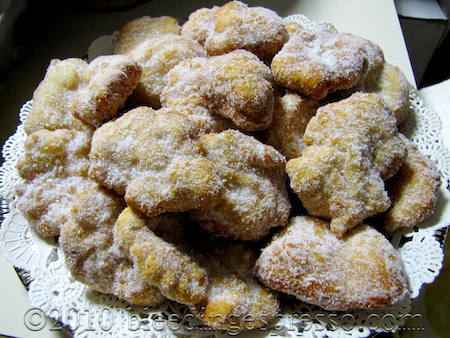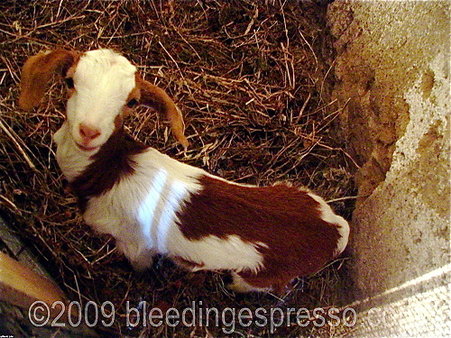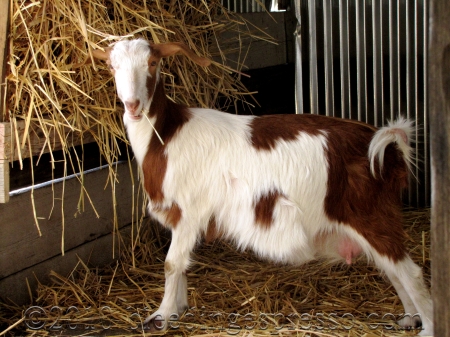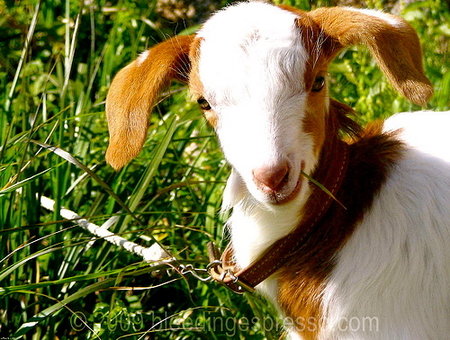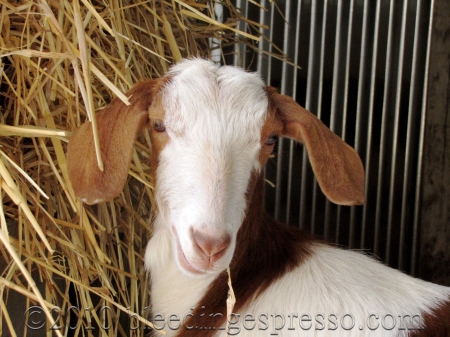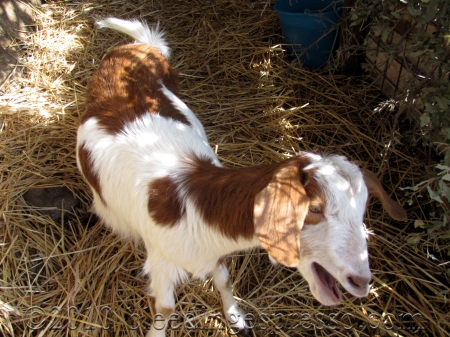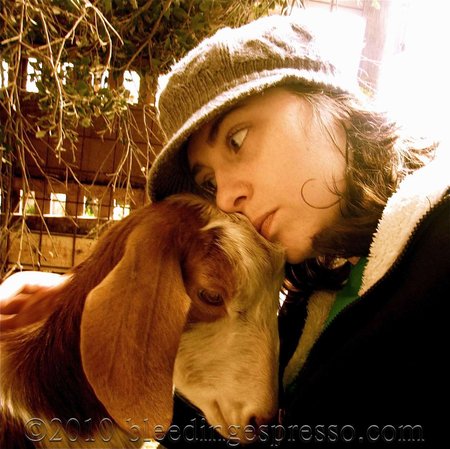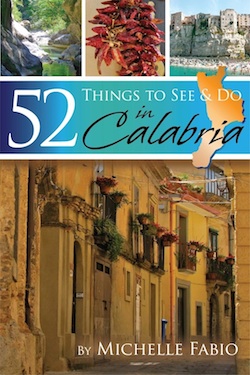Archive for the ‘life in calabria’ Category
Calabrian Zeppole di San Giuseppe for Italian Father’s Day
Today is La Festa di San Giuseppe or St. Joseph’s Day. Here in my corner of Calabria, we celebrate with “i zippoli” or le zeppole, which are quite different from what some of you know as zeppole, but we’ll get back to that in a moment.
This is what ours look like:
That photo was taken on Christmas Eve in the United States after my mom and I whipped these up for the traditional family get-together at my dad’s house. Why zeppole on Christmas Eve, you ask?
Well because these little guys are *huge* family favorites — think legendary status — and I had a sinking feeling that no one on that side of the Atlantic had tasted their goodness since my grandmother passed away in 2001.
My intuition was right, and these were a big hit, gone rather quickly, and the source of many happy memories floating around my grandmother’s old house. Even the Russians in attendance had to ask how to make these babies.
Well, you don’t have to ask as I’ve already posted the recipe at Calabrian Zeppole.
You can read more about today’s holiday, what fava beans have to do with it, and the different types of zeppole throughout Italy at Fava Beans and Cream Puffs.
And if you want to know how to handle those favas and what to make with them, check out Calabrian Sausage and Fava Beans.
And hey, if you’re feeling a bit adventurous, why not take some vacation days, compare flights, and hop a plane in time for some zeppole? I’ll save you some. Probably. Hurry!
Now if you’ll excuse me, it’s time to get snapping, literally, as I get my fava on.
Auguri to all the Giuseppes and Giuseppinas!
And buon weekend a tutti!
Borlotti Beans: Facts and Recipes
Borlotti beans are one of the staples of our diet in my house in Calabria, so it’s about time we talked more about them, don’t you think?
Borlotti beans are also known as cranberry beans or French horticultural beans and are some of the cutest darn beans around if you ask me.
Don’t get too excited about how festive they look, though, as that color goes away with cooking. They eventually turn brown.
What do they taste like? I’m not a bean expert or anything, but to me, borlotti beans taste most like what those of us who enjoy baked beans are used to having. They’re meatier than your average white cannellini bean, aren’t at all sweet, and hold up *extremely* well with tomatoes in particular. I speak from experience (we’ll get to that in a minute).
Here you can find borlotti in all kinds of ways–dried, fresh, jarred, canned. If you get the dried version, you’re going to have to soak them overnight before using them.
And they’re good for you! They’re high in protein (23.03g in 100g dried) and fiber (24.7 g). See more nutritional information at (where else?!) Borlotti.com.
So now I’m sure you’re wondering what to do with these loverlies. Well, they’re great in just about any type of dish from soups and stews to cold salads, so I do encourage you to use your imagination.
For some guidance, though, I posted a recipe a very long time ago, my very first recipe ever posted in fact, so you may have missed it:
Borlotti Beans with Tomatoes, Garlic, and Basil
We eat this literally once a week here throughout the winter, so it comes *highly* recommended.
For some other ideas on what to do with borlotti, check out what some of my blog friends have shared:
- Barbecue Baked Beans with Bacon at Sara’s Ms Adventures in Italy
- Braised Borlotti Beans with Red Peppers, Parsley, and Berbere Spice at Ilva’s Lucullian Delights
- Cowboy Beans with Smoked Sausage at Jenn’s The Leftover Queen
- Cranberry Beans, Kale, and Sausage Stew at The Passionate Palate
- Minestrone with Fresh Borlotti Beans and Farro at Susan’s Porcini Chronicles
What is your favorite bean dish, borlotti or not?
Calabrese Proverbs by Month: March
I love proverbs in any language, but there’s nothing more pleasing to my ears than Calabrese proverbs…and man do they love to talk about the weather.
Here are three you’re likely to hear around Badolato throughout this month, the first two in dialect, the last in Italian:
Badolatese: ‘U friddu ‘i Marzu trapàna u cornu do voi.
Italiano: Il freddo di Marzo penetra nel corno del bue.
English literal: The cold of March pierces the ox’s horns.
English loose: When it’s cold in March, you’ll freeze your arse off.
One more basic and to the point:
- Badolatese: Marzu è pacchiu.
- Italiano: Marzo è pazzo.
- English: March is crazy.
And to elaborate on that point:
Italiano: Arriva marzo pazzerello; esce il sole e prendi l’ombrello!
English: Here comes crazy March; the sun comes out and you grab your umbrella!
It is true. March weather really does tend to be rather pazzo. It seemed to start in February this year with several days of both sunshine and rain, so we’ll see what this year brings. So far so good!
What are your favorite proverbs (in any language)?
One Year with Pasqualina
Today marks one year since our kid Pasqualina came to live with us. This was then:
And this is now:
And just for fun, another from about a year ago:
And today:
I guess I can’t really call her a kid any more now that she’s ready to have kids of her own. Yes, that pink you see up there on that second photo is our Pasqualina filling up with milk. We expect kids in mid-March or so, but we’re not quite sure of the date of spermination (the buck was in the pen for a month).
What a year it’s been…can’t wait to see what this next one brings!
Goat Zen in the Goat Pen
After compiling my part of the World Nutella Day round up and finishing some work assignments early in the week, I decided to enjoy the sunshine this afternoon and spend some time with my girls (of the caprine persuasion).
I never would have imagined how calming and reassuring just being in the presence of these goats can be. It’s really hard to be worried or stressed about anything when these sweet faces are looking back at you.
*
Right now I’m reading Goat Song: A Seasonal Life, A Short History of Herding, and the Art of Making Cheese by Brad Kessler (recommended by a reader and native of Calabria, just down the road from me; grazie mille Anthony!).
Kessler describes the connection with nature, history, and yourself that raising goats provides, noting that throughout time, goats have been the subjects of many legends and stories, always “helping humans or leading them to unexpected places.”
“If you follow living beings assiduously in the field, or through the lens of a microscope,” writes Kessler, “they lead you to an understanding of their lives, and all life. They usher you into a kind of Eden.”
*
Margherita and Carmelina usually don’t care *too* much if I’m in there with them–they often come to say hello and then just go back to eating, unless they’re not hungry, in which case they’ll stay for petties for a few minutes.
But my Pasqualina, who you might remember, I bottlefed, rarely leaves my side when I’m in the pen, even when I’m clearly disturbing her nap time.
There’s just nothing like goat zen in the goat pen.

